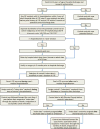Costs of venous thromboembolism associated with hospitalization for medical illness
- PMID: 26244788
- PMCID: PMC4586032
Costs of venous thromboembolism associated with hospitalization for medical illness
Abstract
Objectives: To determine population-based estimates of medical costs attributable to venous thromboembolism (VTE) among patients currently or recently hospitalized for acute medical illness.
Study design: Population-based cohort study conducted in Olmsted County, Minnesota.
Methods: Using Rochester Epidemiology Project (REP) resources, we identified all Olmsted County residents with objectively diagnosed incident VTE during or within 92 days of hospitalization for acute medical illness over the 18-year period of 1988 to 2005 (n=286). One Olmsted County resident hospitalized for medical illness without VTE was matched to each case for event date (±1 year), duration of prior medical history, and active cancer status. Subjects were followed forward in REP provider-linked billing data for standardized, inflation-adjusted direct medical costs (excluding outpatient pharmaceutical costs) from 1 year before their respective event or index date to the earliest of death, emigration from Olmsted County, or December 31, 2011 (study end date). We censored follow-up such that each case and matched control had similar periods of observation. We used generalized linear modeling (controlling for age, sex, preexisting conditions, and costs 1 year before index) to predict costs for cases and controls.
Results: Adjusted mean predicted costs were 2.5-fold higher for cases ($62,838) than for controls ($24,464) (P<.001) from index to up to 5 years post index. Cost differences between cases and controls were greatest within the first 3 months after the event date (mean difference=$16,897) but costs remained significantly higher for cases compared with controls for up to 3 years.
Conclusions: VTE during or after recent hospitalization for medical illness contributes a substantial economic burden.
Conflict of interest statement
Kevin P. Cohoon, D.O., M.Sc. declares no conflict of interest.
Cynthia L. Leibson, Ph.D. declares no conflict of interest.
Jeanine E. Ransom, B.A. declares no conflict of interest.
Aneel A. Ashrani, M.D., M.S. declares no conflict of interest.
Tanya M. Petterson, M.S. declares no conflict of interest.
Kirsten Hall Long, Ph.D. declares no conflict of interest.
Kent R. Bailey, Ph.D. declares no conflict of interest.
John A. Heit, M.D. has served on Advisory Boards for Daiichi Sankyo and Janssen Pharmaceuticals for which he received honoraria.
Figures
References
-
- Avorn J, Winkelmayer WC. Comparing the costs, risks, and benefits of competing strategies for the primary prevention of venous thromboembolism. Circulation. 2004;110:IV25–32. - PubMed
-
- Fanikos J, Rao A, Seger AC, Carter D, Piazza G, Goldhaber SZ. Hospital costs of acute pulmonary embolism. Am J Med. 2013;126:127–132. - PubMed
-
- White RH, Garcia M, Sadeghi B, et al. Evaluation of the predictive value of ICD-9-CM coded administrative data for venous thromboembolism in the United States. Thromb Res. 2010;126:61–67. - PubMed


